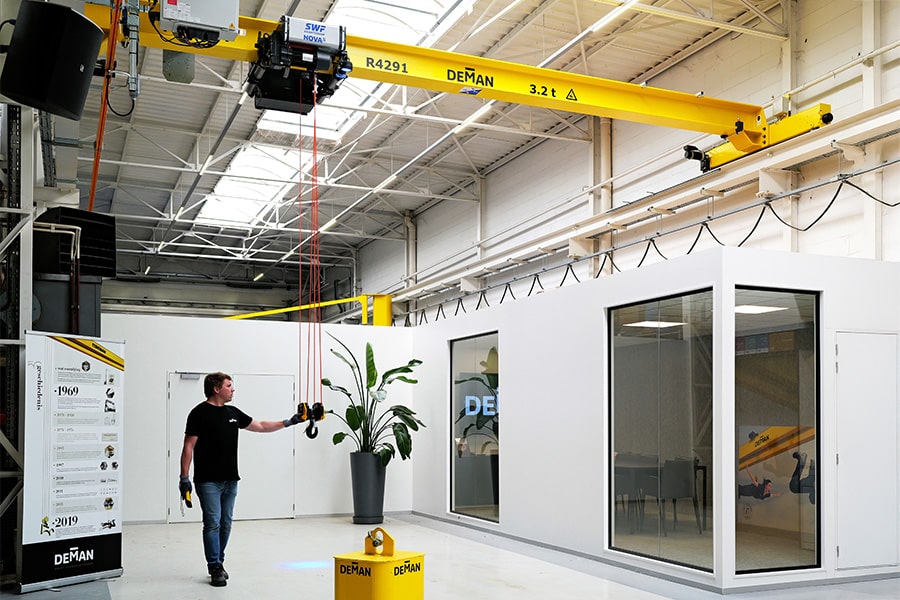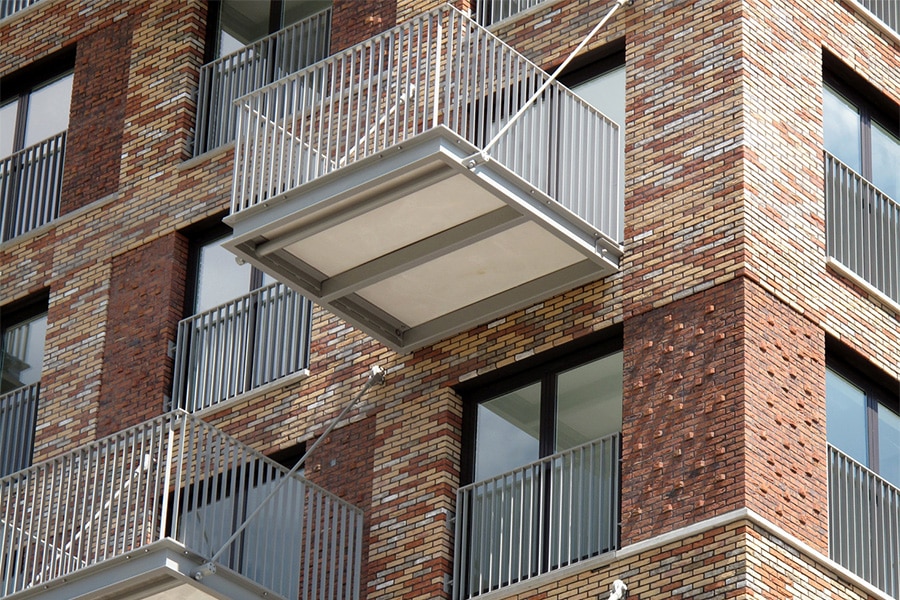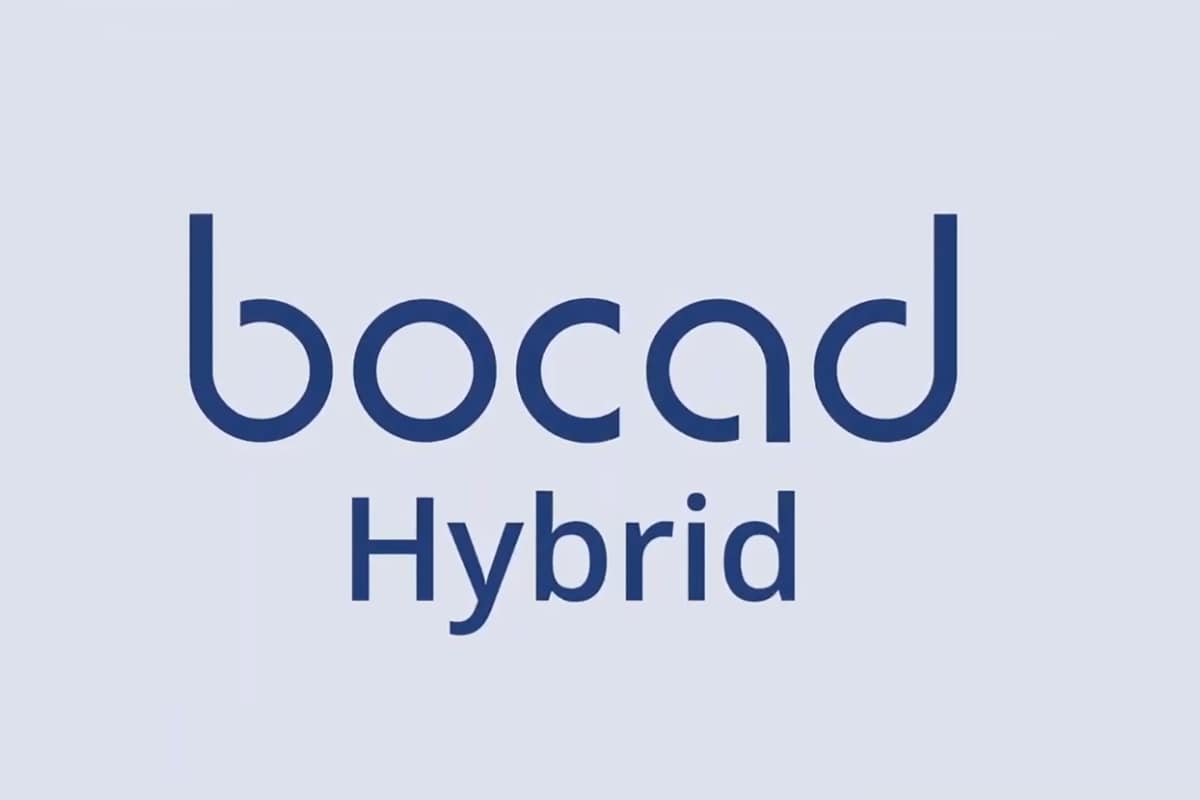
Counterbosch bike bridge improves traffic flow: An icon for Eindhoven
"The bridge spans the entire highway at once, without supports. The bridge stands out because of its striking construction, but also because of the lighting. The colors of the bridge are then visible from afar. Tegenbosch is already an icon for Eindhoven and the surrounding area."

Anyone currently driving a car along the Anthony Fokkerweg in Eindhoven will pass under it. Bicycle bridge Tegenbosch is already counted among the most beautiful works of art in the southern Netherlands. Not only does the bridge have a beautiful slender shape, the lighting is also special. As cyclists cross the bridge, the arch and the bridge deck are illuminated depending on the pace of the cyclists. The colors change seasonally.

Tegenbosch, already an icon.
Award through collaborative qualities
When the bicycle bridge Tegenbosch was put out to tender, Dura Vermeer and Ploegam were very keen to compete for the work. After all, this was an important link in the new road structure of Eindhoven Northwest. Fietsbrug Tegenbosch - near Eindhoven Airport - had to improve the flow of traffic on Anthony Fokkerweg, create an east-west connection for cyclists and improve the accessibility of the Brainport Industry Campus. The current bicycle path on Anthony Fokkerweg was sacrificed for an extra lane for car traffic. The Dura Vermeer-Ploegam combination was awarded the work on the basis of the collaborative qualities it put forward in its plan.

Landing in a construction team
"That was new to us," says Joris Bevaart, Ploegam's project manager. "The cooperation qualities had earned us a place in a construction team with a partner unknown to us." The construction team was formed by three project managers from the municipality and three from Dura Vermeer-Ploegam. At the time - except for the bridge and the existing roads - there was no region on paper, which is not to say that the project leaders were left to their own devices. A coach guided the introductory process, formulated everyone's core values and defined the goal of the collaboration. The project leaders thus became the designers and creators of the most beautiful and best result, eliminating self-interest.
Pressure cooker
"I am trained in computational formulas," Bevaart explains. "As a rule, I work with technicians. Working in a construction team was new and at the same time a breath of fresh air. I already dare say that this approach is one of the best experiences in my career. Of course, it was a pressure cooker. Under high pressure and with the careful consideration of numerous interests, we had to make very important, joint decisions. This is how we prepared the work for a year." When the design phase transitioned into the execution phase, some members of the construction team changed and the steel builder got the go-ahead for preparations.
The practical implementation
Everything that had been prepared was now put into practice. While steelworker CSM designed and produced the steel elements, Dura Vermeer and Ploegam performed the earthwork on site. They poured the concrete foundations for the abutments, replaced the guard rails with ones that could easily be removed when the bridge was installed, and leveled the entire construction site so that the Mammoet trolleys (the 'SPMTs') could drive over them without any problems.
Placement within a few hours
In January 2020, CSM brought the steel parts to the construction site for welding together. "A huge job," Bevaart says. "Stacks of parts were brought in and joined together on site until the intended whole was created. This happened along the A2/N2 near the Novotel. On Friday evening, August 28, the only out-of-service period went into effect and the highway was closed. At that time, we were able to excavate the exit ramp, which was also too high. On that same evening we started trial runs with the SPMTs and on the night of August 29-30 around midnight, the bridge was in place across fourteen lanes of traffic!"
The real thing
As much as the placement of the bridge felt like the completion of the work, for Dura Vermeer-Ploegam the big work then really began. The excavated exit ramp had to be returned to its original state. All detour in the city had to be undone and the N2, the only north-south connection in Eindhoven, had to be restored to its optimum condition. Here the coronavirus helped a hand. "The N2 is Eindhoven's busiest traffic artery. Of course it was far from quiet, but corona did reduce the intensity considerably."
An icon for Eindhoven
Then the connection between the bridge and Anthony Fokkerweg could be established. The last section of Anthony Fokkerweg was completed and the existing structure was made suitable for the increased intensity of traffic. At the end of October, the first cyclists crossed the bridge.



